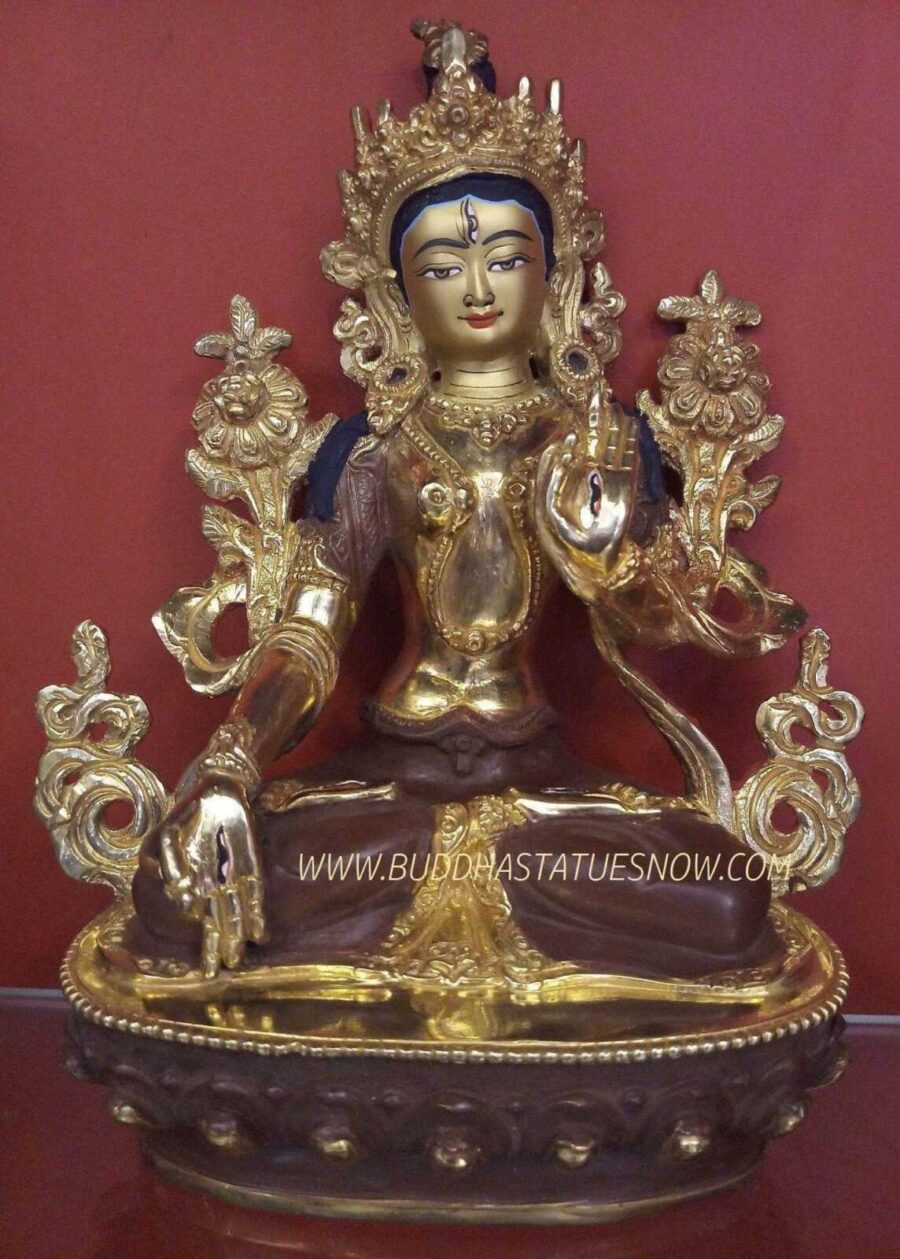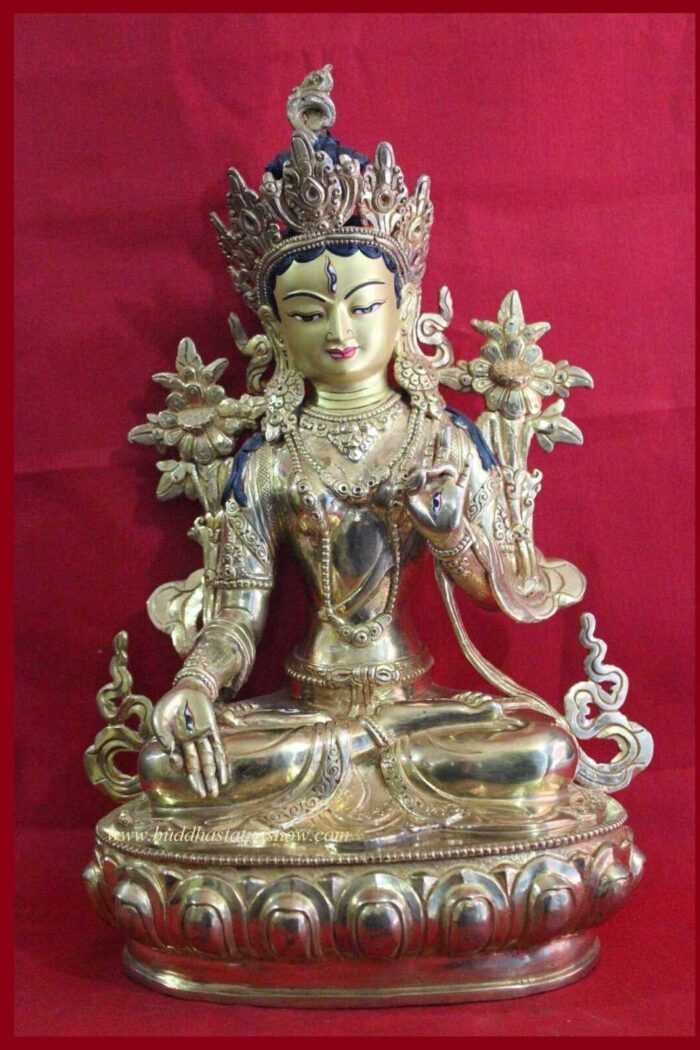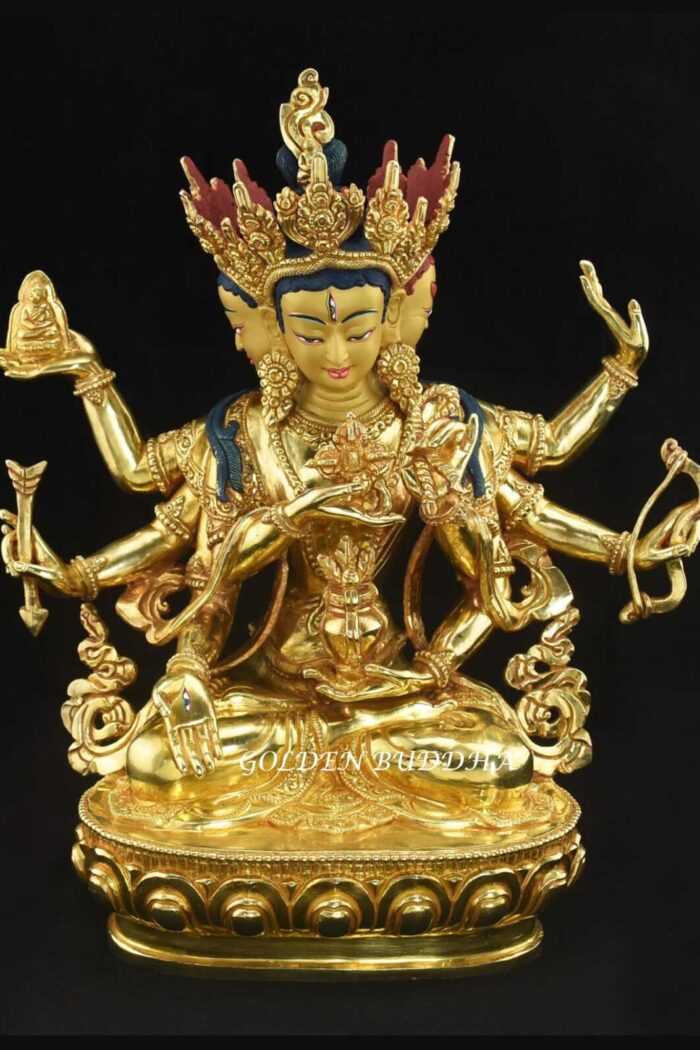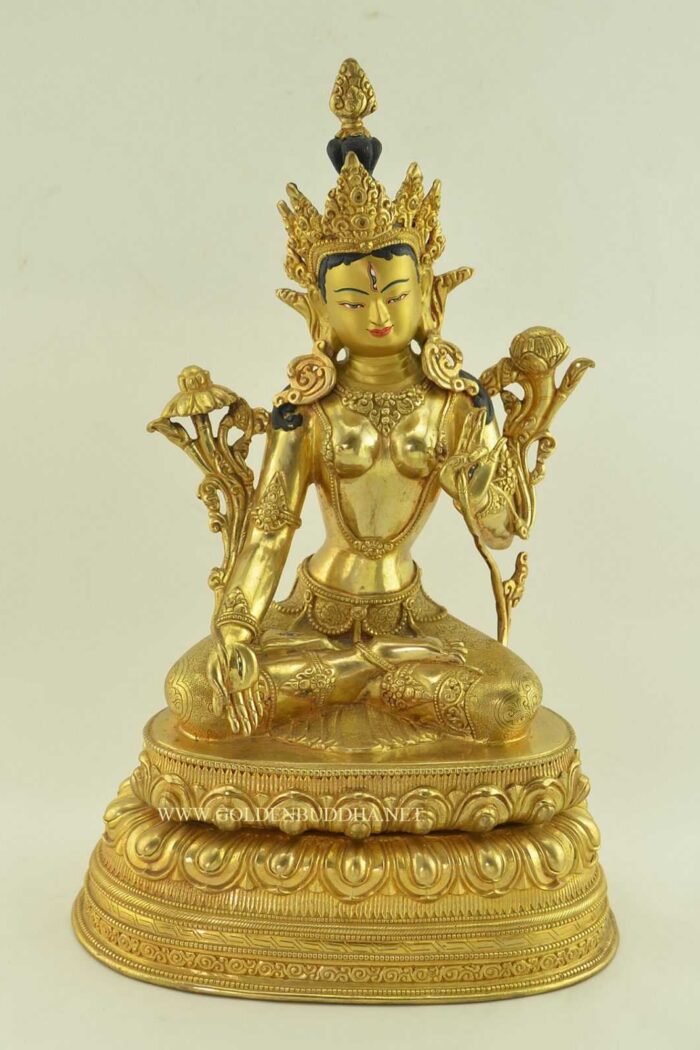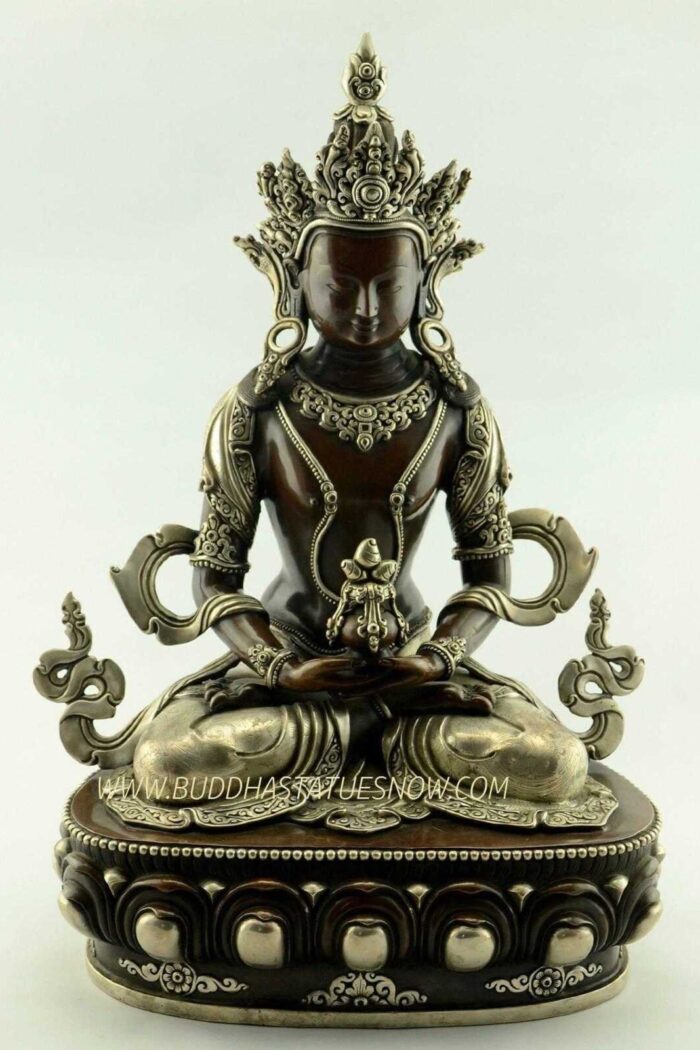White Tara is also known by the name “Cintachakra”. This translates into English as the “wish fulfilling wheel” and a Cintachakra sculpture may help to heal illness and enable longevity. However, Buddhists also believe that the laws of cause and effect apply to all events. Therefore, Cintachakra sculptures would benefit those who are encouraged by her virtues.
Cintachakra is one of the 21 embodiments of the bodhisattva Tara. Tara has a playful quality and she will sometimes appear to devotees who are too dogmatic about their Dharma vows. Her purpose is to encourage them to lighten up so they may progress more effectively. Additionally, Cintachakra encourages women to be more diligent in order to decrease the imbalance of male/female Buddhas. Indeed, she has vowed to only be reincarnated as a female until her desire is fulfilled.
Special Features of Cintachakra Sculpture
Our Cintachakra sculpture showcases her seven eyes. There is an eye on the palm of each hand and the sole of each foot. This is so that each of her actions will be carried out with virtue and wisdom. Additionally, she has a third eye in the middle of her brow in addition to the two eyes on her face, all of her thoughts will be imbued with virtue.
Our Cintachakra sculpture is adorned with the crown and jewels of a bodhisattva. The intricate detail is produced using the lost wax method of sculpture creation. For many centuries our Nepali sculptors have been the preferred choice of the Tibetan monasteries for their statues and ritual items. As a result, you can rest assured that you have procured a monastic quality Cintachakra statue.
Furthermore, at buyer’s request we are happy to adorn the crown and jewels of the sculpture with turquoise and coral stones. We are able to embellish the statue at no extra charge before delivery. Click here to learn more about the 21 embodiments of Tara.


